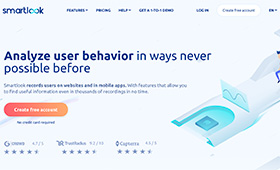The Agile Approach: Minimize Risks of Web Design Projects
Being agile might sound like a daunting prospect for some clients – after all, it goes against the grain of what most companies consider the traditional execution of a project: sit down with a prospective developer, make a series of requirements, set a deadline, name a price, and send them on their way.
But in the rapidly evolving realm of web design, setting it all in stone is not only impossible, but more likely to stunt creativity and result in less than desirable results when both company and developer have had to cut corners to meet said requirements. Like any creative project, agility is the greatest asset to success, effectively establishing a comprehensive collaborative relationship between client and developer, and keeping up with the changing trends.

Agility is the greatest asset to success.
Being realistic
Let’s face it – we all want things to be done within time and budget, but that’s not always the way the world works. Website tech is one of the most rapidly evolving around, so establishing specs and anticipating that they will remain the same right up until the launch is virtually impossible. Different demands arise, new ideas emerge, and incorporating the technological aspect with all of these is a long, changing process.
Chances are that unavoidable costs will emerge, and this won’t be good news for either the web design company or the client. Not only will some of the development be completely redundant until an upgrade, making it virtually useless, but if the developer takes care of the additional costs themselves, they are less likely to polish up the finished product, ending in a sub-par results. Taking the agile approach allows for flexibility and the freedom to look at cost-cutting alternatives that don’t affect quality.
Brainstorming remains a continuous process
Professional website design is changing. Rather than cementing a list of requirements, it is more beneficial for clients and developers to sit down together and discuss some of the most vital stories of their business; if given a greater freedom, developers can incorporate the values and goals of the client and combine that with their expertise on internet psychology to craft a webpage that is accessible, informative, engaging and even inspiring.
This means that sometimes, clients and developers alike have to be prepared to change, alter, and in rare cases reinvent. Continuous collaboration and flexibility comes down to common sense – keep involvement at a personal level, and you’ll know what each is doing. After all, no matter how much you plan ahead, it is impossible to really predict the route a project will take until you are in the thick of it, hands on.

A continuous process.
Take the right approach
As an involved client, it’s your job to ensure that both you and the developer are playing up to par. A few simple steps to ensure that this process runs smoothly is to:
- Allow freedom with your developer and place your trust in them. Become familiar with their team, research their history, and gain an understanding of their principles and values, as well as how they work. Though you’ll stay involved, don’t interfere too much with their work – remember you are paying professionals for their skills. Develop a relationship which will be solid throughout successful times as well as the challenging ones.
- Establish the minimum viable product (MVP). This means that, while you have the core functionality in place, you can arrange its development in coordination with any enhancements by priority and ease, rather than tackling one before the other and having a hefty amount of reprogramming in order.
- Break things down. Just as you need to stay involved with the web agency, be sure to categorise what aspects are the most important and when they should be implemented. Sometimes, this order will change, and can be a gruelling process – but it’s essential in order for a website to be successful. Developing the most important feature may seem immediate, but the steps that lead towards that feature must also be set in place.
- Take time to understand if the Agile approach is the right one for your UX project. Lean and agile UX can work very well to create new products or services when speed is the main priority of the project. Agile UX methodologies allow to work at a faster pace by reaching solutions quicker and sometimes more efficiently. However, the typical Agile process of design, launch, test and refine might not work well for all projects. If the customers’ first impression is a negative one, they might not come back a second time to give the product or service a chance once it has been refined.
Indeed, for many the agile approach may not be for them. But consider the possibilities of agility: not only are you minimizing risk, but adopting and creating a relationship that yes, demands a great deal of time and effort, but also leaves room for the kind of innovation which puts companies at the top of the game.







I use the agile methodology…. Sadly most clients are still stuck on the traditional ways of s/ware development: this almost always works to their detriment. Nice article